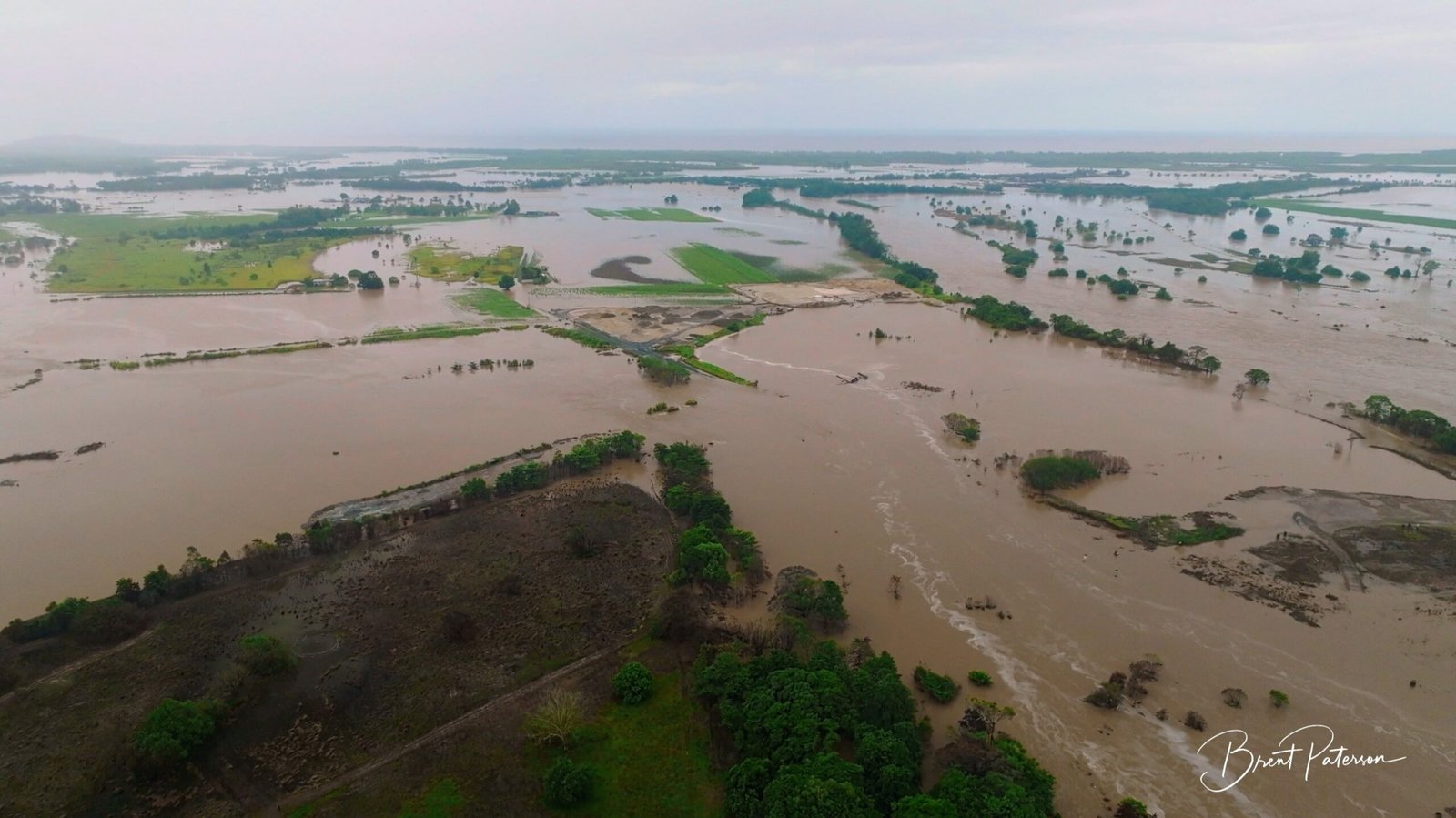Australia’s northeast, particularly regions along the Great Barrier Reef, is grappling with severe flooding caused by heavy rain following the passage of former Tropical Cyclone Jasper. The intense rainfall has cut off several tourist-popular towns, prompting evacuations and even leading to the capture of a crocodile from a storm drain in the town of Ingham.
Over the weekend, Jasper unleashed months’ worth of rain in Queensland, forcing residents to evacuate their homes and seek refuge on rooftops as rivers swelled rapidly. The state’s premier, Steven Miles, emphasized the ongoing challenge, stating, “The problem is the rain won’t stop, and until it eases up, we can’t get aerial support into remote places.”
Despite being downgraded to a tropical low, Jasper’s impact has been significant, causing widespread destruction across the state. In Ingham, conservation officials captured a 2.8-meter (9-foot) crocodile in a storm drain near a gas station—a sight not commonly associated with urban areas.
Cairns, a key town serving as the gateway to the Great Barrier Reef, experienced an exceptional amount of rainfall, receiving about 600 mm (24 inches) in just 40 hours through Monday. This is more than triple the December mean of 182 mm (7.17 inches). Cairns airport witnessed flight cancellations and postponements, with images on social media showing partially submerged planes on the tarmac.
Water pumps have been working to drain floodwaters at the airport, but the volume of water surpasses their capacity. Residents, including families with children and pets, faced challenging evacuations, with some seeking refuge on rooftops awaiting rescue boats.
Weather officials anticipate more rain as Jasper persists through Monday, with certain regions expected to receive up to 300 mm (12 inches) within six hours. Major flood warnings are in effect, with rivers predicted to break records dating back to 1977. Prime Minister Anthony Albanese confirmed that defense forces are on standby for potential rescue and relief operations.
Australia is currently experiencing the El Niño weather phenomenon, contributing to extreme weather events ranging from floods to wildfires. While the northeast grapples with flooding, the southeast is under bushfire alert, with temperatures expected to exceed 40 degrees Celsius (104 degrees Fahrenheit) in some Sydney suburbs.



